

2008. First attempt at a Stirling engine for Piwakawaka (replica 19th cent. fantail launch).
Unpressurised, 158mm bore, 128mm piston stroke, 2.5 litre swept volume.
Overall size; 0.7m high, 0.25m diameter, plus side crank, flywheel and fire box. 80kg.
Layout: Concentric piston-displacer type (beta), approx. 90 degree phase angle.
Fuel; solid fuel burner; wood, coal and books (especially Mills and Boons).
Heating: 30/170mm x 8mm OD SS tubes. Cooling: 30/170mm x 8mm OD copper tubes.
Regenerator: SS gauze (later removed). Displacer control by straight line linkage.
Piston sealing; two 3mm wide by 3mm deep cast iron piston rings.
Displacer sealing: one 3mm wide x 3mm deep cast iron piston ring.
Target output: 1kw at 500rpm. Achieved output: approx. 200watts at 300rpm.
1kw from 2.5 litre swept volume is very ambitious. No 2.5 litre unpressurised Stirling cycle air engine that I know of has yet achieved even half of this (by 2025). But there is progress as shown by various later LSM’s getting to maybe 400watts and possibly a bit more.
The internal cross-sectional area of the heat exchange tubes in LSM 11 (8.5 sq.cm total) are now known to be restrictive, and having a displacer seal also adds friction which costs some output- but is required when tube type heat exchangers are used.
Although marginal for Piwakawaka (wasn’t tried), LSM 11.3 is reliable and is the only LSM series engine to use solid fuels exclusively (all later ones have gas firing for convenience with some able also to use solid fuel). It powered a yard cart (very slowly!) in our 2009 “Great Race”, a youtube video of which has now been viewed thousands of times.
LSM 11 has tube type heat exchangers because they can be more easily scaled, and in 2008 I was considering making larger Stirling engines fired by methane from effluent settling ponds for electricity generation. All later LSMs except 13 use annular type heat exchangers.
LSM has more power/swept volume than 19th century unpressurised hot air engines (Heinrici, Rider, Ericsson, Robinson and the like), and much more when compared by overall dimensions and weight, but not by nearly enough to be useful in a 21st century context.
Development of LSM 11 was completed in 2009, with 11.3, by which time it’d had 3 different linkage systems, 2 pistons, 3 displacers and 100's of hours of testing.
PETER LYNN, ASHBURTON, NEW ZEALAND, to MAY 2025
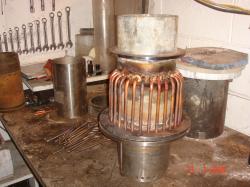
LSM 11 cold end tube heat exchangers 2008
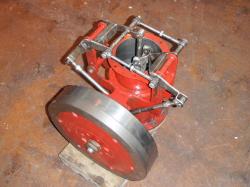
LSM 11.1 early version of straight line linkage for diplacer control, 2009
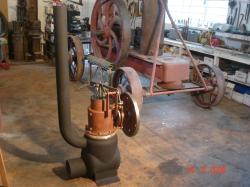
LSM 11.1 with small flywheel, short firebox, first straight line linkage 2008
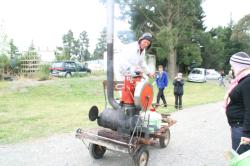
LSM 11.2 in the Great Race, 2008
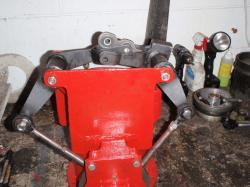
LSM 11.3 final straight line linkage for displacer control 2009